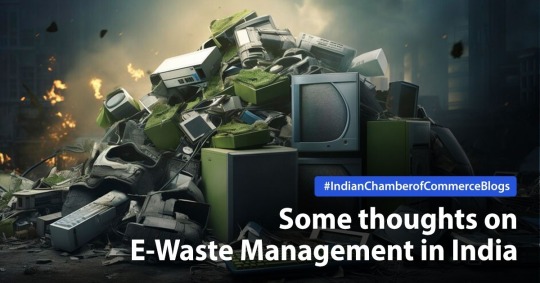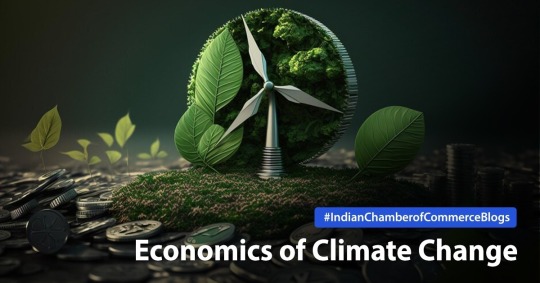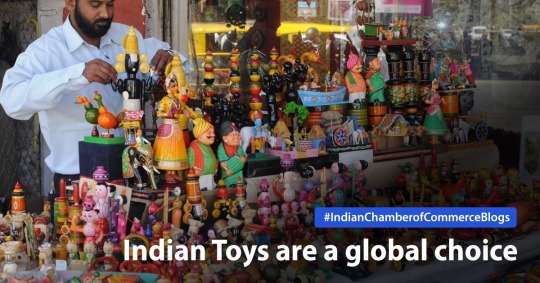#indianchamberofcommerceblogs
Text
What sustains homestay tourism? Some thoughts

From wooden cottages to heritage cottages perked on cliffs, travellers are constantly seeking unforgettable travel experiences that provide a local flavour and a home away from home. It is no surprise that India’s homestay market has had a phenomenal growth , after the Covid 19 Pandemic. Homestay in a real sense gives a unique and varied experience to the traveller where they interact with the family of the host and get to know about their culture. A host is always a great source of first-hand local cities knowledge, by acting as a guide for the traveller, whether be a tourist attraction, local eateries, shopping or any kind of travel guidance/assistance. Most of the times a stay at a homestay becomes a memory for the travellers, travelling from other part of the country or a foreign country . Data shows that homestays are a viable option for travellers as well as entrepreneurs , implying demand and supply both growing and enlarging the pie or gross value added, in economic terms. India’s domestic travel market is around $ 35bn at end of 2023, as per rough estimates and 7% of that is homestay market which is growing in double digits. With post pandemic foreign tourist arrivals surging from 6.4 million in 2022 to 9.3 million in 2023, the homestay market would be sustained by both domestic and foreign tourists.
However, tourist satisfaction is integral to growth of homestay markets. And for that sustainability of homestay tourism is essential. This sustainability has to be three pronged: (a) Economic (b) Social and (c) Environmental. Economic Sustainability means income earning by the locals and income with equity and diversity. Economic Sustainability also means Infrastructural facilities like access to roads, availability of transportation, uninterrupted power & internet . Social Sustainability is ‘Atithi Devo Bhava’ or treating tourists as God by the locals , following Indian culture and tradition . Environmental Sustainability is Environmental Protection and Integration of homestay with environment e.g. eating farm grown food, using waste as compost and zero pollution. We think decision-makers must be concerned with the social and cultural sustainability of the homestay. In order to increase tourism activity, host community must be given the opportunity to engage with travellers, get knowledge of the culture, and gain access to the history and culture of the place. Inadequately trained guides would not encourage tourist flow. Also, Safety of the visitors is highly important and for that structuring some homestay rules would be essential for a conducive environment. Finally, upgrading the host-guest communication, improving the enrolment and management of grievances, would lead to sustainable and growing tourism . Placing a body to ensure fair communication and delivery of promised services would help.
What are your thoughts on homestay tourism? Do share them with us.
0 notes
Text
How can we get Gold from the Golden Fibre?

Due to its natural colour and importance jute has become known as the ‘golden fibre’ . The fabric has little impact on the environment and is proven to be very durable and the plants are easy to grow, produce a large crop and do not require various pesticides and fertilizers. The fiber is a relation of the flax and hemp plants and is extracted by a very similar method. Jute has a vast array of uses ranging from carpet backing to re-usable bags. Jute is mainly grown in India in the fertile Ganges Delta where it produces a high yield annual crop.
India is the largest producer and consumer of jute products in the world. The figure is around 1.97 million MT for India, followed by 1.24 million MT for Bangladesh, our neighbor and second largest producer, but world’s largest exporter. Yet, interest in this fiber is withering away in India due to less interest of people. We need to revive the same. The jute products include rugs, carpets, footwear, wine bottle bags, carry bags, hand bags, wall hangings, jewellery, baskets, coasters, lamp shades, decorative articles and show pieces. Slowly jute is losing market despite the fact that it is reusable, eco-friendly and bio degradable. 92% Jute is used for packaging which is under regulation which says all of food grain has to be packaged in jute bags only. Only balance 8% used for other purposes. However, demand for jute is on a downward trend because of cost competitiveness of mass production from synthetic fibres. Moreover, there are fluctuations in Government Demand for packaging, according to media reports. But, Government of India is keen to develop the sector and has hiked the MSP. The Cabinet Committee on Economic Affairs in March 2024 approved ₹285/quintal hike in the minimum support price (MSP) for raw jute to ₹5,335/quintal for the 2024-25 season as against ₹5,050/quintal for the 2023-24. The Government of West Bengal is providing Crop Insurance too, which gives a lot of security to the sector.
To improve the Jute Market, we may take Bangladesh as a reference point here, since they give 3-4 types of subsidy, including 9-10% subsidy for food packing bags. Perhaps, subsidy may be needed to revive Jute demand, in matter other than packaging. And once the desired scale is achieved the subsidy can be withdrawn. But, to work out the needed subsidy, we require detailed research. Last, but not the least, we also need to ensure only ‘Made in India’ Jute is being sold in India. We welcome your thoughts for helping the Industry to grow. Do write to us.
0 notes
Text
Developing Cricket & Cricketers of Bengal

In its centenary year, the Indian Chamber of Commerce (ICC) has partnered with the Cricket Association of Bengal (CAB) and ARIVAA Sports to inaugurate the "Bengal Pro T20 League" aimed at benefiting cricket fraternity in Bengal. ICC has signed a tripartite MoU with CAB and ARIVAA Sports for a period of 3 years to promote the Bengal Pro T20 League through its extensive network. This league marks the first time that 8 teams for both men and women will compete, with matches scheduled at iconic venues such as Eden Gardens and Jadavpur University at Salt Lake. In the past, ICC has organized various sports events, including the ICC-RCGC Open Golf Championship Tournament in 2021 at the RCGC club in Kolkata. The Bengal Pro T20 League opens a new line for budding cricketers of West Bengal.
Today under the New Education Policy we are taught that we can make any line as our profession, if we love that line. And if we are to make Cricket as our Profession, a little bit of Corporate Handholding can do wonders and open a Pandoras Box of Talents. In the journey of success there are small steps which takes a man or woman forward and towards the top and a person evolves with experience and becomes a leader. Moreover, when one is working in a Team Environment, the task is to identify talent, trust them and nurture them.
We have to believe that they can do it and remove the fear of failure, which has been said by Swami Vivekananda too. It is the leader’s job to ensure that every team member when performing is in the best mental state. This is true for Cricket as well as the Corporate World and when the two merge, success is sure to happen. Come and join us in developing Bengal Cricket Talent. And we can think of carrying forward this to other states too.
0 notes
Text
What is the Metaverse?

It is like a Sci-Fi movie becoming a reality. It helps to connect to people who are not physically present and gives the second-best feeling of being in close touch. The Metaverse actually is an expansive, interconnected digital universe that blends aspects of Virtual Reality (VR), Augmented Reality (AR), and the Internet to create immersive, shared experiences. It is a convergence of physical and digital worlds, allowing users to interact, play, work, and socialize in many ways previously confined to the world of science fiction. VR puts users in a digital environment, while AR puts digital elements into the real world. Software tools applied are Oculus Rift and HTC Vive for VR, and ARKit for iOS, ARCore for Android in the realm of AR. This living digital universe, where events occur in real-time, is a key feature that software platforms like Second Life and Fortnite creatively utilize.
Accessing the Metaverse is not a problem. For a fully immersive experience, VR headsets like Oculus Quest 2, HTC Vive, and Sony Playstation VR are popular choices. Augmented reality experiences can be felt through smartphones and tablets using ARCore for Android and ARKit for iOS. For more advanced AR, devices like Microsoft HoloLens and Magic Leap offer a more sophisticated experience. Familiarising one with the 3D space of the Metaverse is essential. Tools like Google Earth VR and various VR exploration games can help users get accustomed to moving and interacting in a three-dimensional virtual environment. Some Metaverse platforms have their own unique interfaces. VR controllers allow for natural interactions in virtual spaces, for example voice and text chat through Platforms like Discord. Some VR platforms allow teleportation to move around virtually. Platforms like Altspace VR and VRChat offer a variety of environments for meeting and interacting with people from around the globe. The revolution is that an Indian can interact with a US citizen, through their Images or Avatars in the Metaverse. Platforms like Sansar and TheWaveVR specialize in hosting virtual meetings or virtual conferences. LinkedIn VR and platforms like Spatial provide environments for professional networking, workshops, and meetings in a virtual setting. Platforms like Mozilla Hubs and Engage offer spaces for educational seminars, lectures, and cultural exchanges.
The Metaverse opens a gateway to a world of opportunities, making it really possible that ‘Nothing is impossible’ and creating a platform for innovation, social connection, learning, and business. What do you think? How can we utilize this to our benefit?
0 notes
Text
Making Medical Devices in India

Medical devices play a critical role in modern healthcare systems, being part of the diagnosis, treatment, and monitoring of diseases and medical conditions. However, 70-80% of India’s medical device requirements are met through imports and very little is manufactured at home. The Indian medical devices market was valued at approximately $10-12 bn in 2020 and is projected to increase to $50 bn by 2025. India imports medical devices primarily from the USA, Germany, China, and Japan. Realizing the problem of high import dependency and to keep technology affordable, the Government of India approved the National Medical Devices Policy on 2 May 2023. The policy introduces several key initiatives to streamline regulations, foster innovation, attract investments, develop human resources, and develop Indian brands of medical devices. However, the manufacturing of various devices needs approval by various approving bodies. The Medical Devices (Amendment) Rules 2020 encompass various aspects of device regulation, such as classification, registration, manufacturing and import, labeling, sales, and post-market requirements. The Bureau of Indian Standards (BIS) has its own categorization based on domestic standards. It may be ideal to have a separate law and regulatory body which would take care of medical devices end to end along with import tariff rationalization and competitive domestic pricing.
Domestic manufacturing also needs a thrust in implementation, as the PLI scheme is in place. Under the PLI scheme for medical devices, the Government will provide an incentive of Rs 3,420 crore to new projects between 2022-23 and 2026-27. As of June 2023, 26 applicants had invested Rs 852 crore out of the committed investment of Rs 1,330 crore, which builds a case for a bigger push. There is also a difference in the implementation of new medical devices between public and private healthcare. For public hospitals, it is very difficult to procure and apply to patients while the private sector can easily do so. Bringing public and private procurement of devices at par would help a lot. Finally, a strong focus on R&D is essential to drive innovation and enhance the safety and quality of medical devices. Collaboration between industry, research institutions, and regulatory bodies can establish robust quality control measures, promote adherence to international standards, and ensure patient safety.
0 notes
Text
AI in Robotic Surgery

Robotic surgery, or robot-supported surgery, allow doctors to do many type of complex processes with more precision, flexibility and control than that can be done with conventional techniques. Robotic surgery is usually associated with minimal invasive surgery — procedures performed through tiny incisions. The maximum used clinical robotic surgical system includes a camera arm and mechanical arms with surgical instruments attached to them. The surgeon directs the arms while seating at a computer console in the operation theatre. These surgeries have been successfully carried out on eye, knee, kidney, gallbladder, in cancerous conditions, in laparoscopy and hernia operating procedures, in gastrointestinal surgery, as well as in cases related to oncology, urology, orthopaedic and cardiology among many.
AI can improve robotic surgery by reducing the surgeons’ tension, improving decision making and accuracy. AI algorithms organize the heavy duty surgical procedures by zeroing in on the tools , and using superior imaging techniques and computer simulations create a detailed surgical plan that takes into account the patient’s unique anatomy and any possible complications. AI algorithms also supervise operations, monitor the patient’s vital signs and convey warning signals, where needed. These algorithms and models decide the trajectory of the robotic arm, give intelligent feedback to the surgeon, adjust the force applied by the arm, enhance the user interface of the console and guide surgical decisions. AI and Machine Learning are used for motion planning, computer vision, force sensing, teleoperation and predictive analytics.. Machine used Surgical Force determination is more accurate than Human determined and in case of any rare Machine Error, the human is always ready to step in. In fact the whole operation processes becomes data analysis oriented by machines which help in human decision making. And the results are good and higher accuracy, the ultimate goal of any surgery . The Robot does not perform the surgery on its own but works as an extension of the surgeon’s hands allowing more accurate and controlled movements which are not affected by any emotion. India boasts of 66 robotic surgery centres with 71 robotic systems already installed till June 2023.
For all that is good about AI, it cannot substitute for surgeon’s intuition which is a critical determinant of patient outcomes. We should ideally add Robotic Surgery as an extended surgeon arm and not be a replacer of it .What is your opinion? Do share with us.
#IndianChamberofCommerceBlogs#artificialintelligence#artificialintelligenceai#AI#Robotics#Surgery#RoboticSurgery#roboticsurgeryadvantages
0 notes
Text
Some thoughts on E-Waste Management in India

Waste , Electronic, Electrical and Technical devices need to be recycled properly, otherwise toxins are released into the soil, water, air and human tissue which raises the concentration of lead and other harmful compounds. Managing E-Waste in a eco-friendly way is a huge task considering the generation is as high as 40% of the new arrivals together with the accumulated lot and also expensive as the equipment for waste treatment plant, collection cost of E-waste, repairing and maintenance is costly. The primary step in reducing E-Waste is reducing E-consumption per se which is out of the race for the present day. Rapid product development and forced obsolescence are two key factors and this is encouraged by unbridled consumption of today. In 2023, the consumer electronics industry is expected to generate $75.77 bn in revenue with telephones occupying a share of 58% at $ 44.34 bn. And the craze for annual model change happens in phones. Globally, 53.6 MMT of electronic trash were produced in 2019 and the figure is expected to reach 74MMT by 2030, according to the Global E-Waste Monitor Report. India is he 3rd largest E-waste generator after China and the USA with 3.3 MMT E-Waste generation annually. India also faces the problem of importation/dumping from rich and industrialised countries. In India, E-Waste is covered by a number of environmental laws and rules, but penalties for non-compliance are insufficient and difficult to enforce which enhances the problem. The legislation in India dealing with E Waste is basically preventive and procedural in nature which does not provide any punitive measures for the manufacturer, importer, distributor and user of electronic device , as a result the violator continues to do so. This again is loaded further by electrical waste on all fronts.
In such a situation, we may recommend the following:
(a) Policy level interventions like creation of E-waste Regulation, Control of their Import and developing a process for item wise disposal/recycling. Ideally the process for disposal/recycling may be aligned to an institutional structure.
(b) Developing environmentally sound engineering methods for recycling , recovery and disposal with quality standards at each step.
(c) Align FDI and Private Investment in Solid Waste Management to E-Waste Management.
(d) Stringent monetary punishment for non-compliance with rewards for highlighting non-compliance.
What are your thoughts? Do share them with us
#IndianChamberofCommerceBlogs#sustainability#renewableenergy#environment#wastemanagement#ewaste#electronicwaste#electronical#ewastemanagement#ewasterecycle#Technicaldevices
0 notes
Text
Economics of Climate Change

Climate change is the single most critical planetary threat that societies face today, as all 4 standard indicators of climate change reached new peaks in 2021-22. Concentrations of GHG reached record levels in 2021 –> CO2 concentrations in 2021 were 415.7 parts per million (ppm), methane at 1908 parts per billion (ppb) and nitrous oxide at 334.5 ppb and so did global sea level rising at an average of 4.5 mm per year. Top 2 km of oceans continued to warm in 2021 and the ocean waters have acidified increasingly absorbing 23% of CO2 emissions. The ecological consequences of climate change are worrying enough but a bigger worry are its socio economic repercussions as it affects production, GDP and public welfare globally. But before that we must understand that main countries responsible for climate change are the developed countries of Europe and US, though they try to blame the poverty and population density of developing countries.
And there are 3 primary causes of climate change: (a) Industrialisation (b) Colonisation and (c) Consumerism. The countries with higher levels of industrialisation are emitting higher levels of carbon. US alone is responsible for 25% of the global GHG emissions followed by China, Europe and the African nations. Ongoing ecological colonization or ownership of natural resources by the developed world also lead to carbon emissions from the developing world. Moreover, according to a UN report, developed countries account for 24% of the world population, but consume approximately 70% of the world’s energy, 75% of the world’s metals, 85% of the wood, 60% of food and 85% of chemicals.
The way forward is: (a) Sustainable and Equitable development (b) Decarbonising the atmosphere and (c) Climate Justice. Promoting a Production and Growth pattern while preserving the Environment is Sustainable Development. Equitable development would help eradicate poverty without harming the environment. The more we enforce use of Renewable Energy, the more we would succeed in Decarbonising the atmosphere. There are 3 aspects of Climate Justice : (a) Reparatory (b) Compensatory and (c) Obligatory. The principle of common but differential responsibilities and respective capabilities (CBDR&RC), creation of global climate fund and the idea to set up Loss & Damage Fund reflect the same. But, implementation has been weak.
#indianchamberofcommerceblogs#economics#economy#economicgrowth#economicnews#climate#climatechange#environmental#sustainability#nature#globalwarming#savetheplanet
0 notes
Text
Start Up: Anything is Possible.

Venture Capital backed companies account for 21% of US GDP, and 11% of US private sector employment. The reason we are saying Venture Capital backed companies, is they have moved from Start Up companies to highly successful and profitable concerns. Moreover US Venture Capital firms are today investing in hotbeds of innovation such as China and India as we have become an interconnected society. Rough estimates, say Start Ups today have the potential to contribute 4-5% of India’s GDP by 2030 and have generated 1 million jobs since the Start Up India initiative. Entrepreneurs have proved that conventional wisdom may be conventional but it is not always wise. They demonstrate that good ideas-the ones that change the world , are often initially rejected by all, except for a niche group of risk takers and innovative thinkers whom we usually find among the Venture Capitalists. And a successful Entrepreneur is associated with a good Idea. But, then, what it takes to be a successful Entrepreneur? We feel it takes: a) Brains and Education and innovative ideas b) Energy and Passion c) Expertise d) Vision with good Execution e) Integrity and f) Nerve Control to overcome tough situations. We feel that this in you, the reader of this blog, too. Lastly, they need a favourable Start Up Policy which we have and a Partner in the form of a Venture Capitalist who is genuinely interested in the success of the Start Up. Venture Capitalists often take a Board Seat and provide key advice, mentoring and strategic guidance; help in hiring; help in finding customers , suppliers and additional Investors when needed. All this comes to the title as conclusion ; with a Start Up: Anything is Possible. Hence, come on, Start Up : India
#IndianChamberofCommerceBlogs#Startup#startuplife#startups#StartUpBusiness#startuptips#StartupIndia#startupcompany#startupstories#AnythingIsPossible#Entrepreneur#successfulentrepreneur#Venture#Capital
0 notes
Text
Which way Generative AI?

Generative AI is a type of artificial intelligence technology that can produce various types of content, including text, imagery, audio and synthetic data. A recent study by ILO suggests that the most important impact of Generative AI would be to support work rather than fully replace it by Automation. Researchers found that only clerical work is affected by the technology with 24% of clerical jobs highly exposed while an additional 58% at medium level exposure. Since women are higher in clerical jobs, this raises questions of gender imbalance too. Interestingly, among the other occupations, the highest proportion of tasks with significant exposure to Gen AI moves within the range of 1-4%, while tasks with moderate exposure never exceed 25%.. Goldman Sachs estimates that shifts in workflow resulting from the use of Generative AI could put 300 million full-time jobs at risk of being completely automated or may result in parts of an employee's job being outsourced to creative AI tools. Generative AI has a neutral nature, being neither positive or negative by itself . Its socio-economic impact would depend on its use only . If Generative AI is used to fill entry level positions, then one day we would have a mid-level gap which would be difficult to fill. If a cap is given on Automation, perhaps managing the future gaps would be easier. The truth is always a shade of gray and neither black nor white. While some jobs get destroyed , some get created and achieving a Nash Equilibrium situation is not possible in the labour market here . To be specific , skill sets made redundant and skill sets in demand are never matching, thus calling for social support policies.
What do you think? Please share your views with us.
#IndianChamberofCommerceBlogs#automation#automationsolution#automationcontrol#automationtesting#automationsystems#artificialintelligence#artificialintelligenceai
0 notes
Text
Indian Toys are a global choice.

Ans. Since 2018-19, India’s Toy exports have turned around and net exports is positive. Between 2018-19 and 2021-22, Toy exports reportedly increased from $109 million to $177 million and the imports declined from $371 million to $110 million. But, what could be the reason behind this success? One reason is likely the tripling of import tariffs from 20% to 60% and the imposition of non tariff barriers. Another reason is the Make in India policy. Bigger question is did the abolition of the reservation policy for labour intensive products in 1997 help? Research reveals that dereservation of toy manufacturer policy did lead to the entry of new firms in registered manufacturing and output expansion, but for a limited period only. However, the unorganised sector had and still continues to play a bigger share in output and employment in toy manufacturing. The big learning lesson from this is promoting labour intensive industrialisation, such as toy manufacturing, can make a big difference to the Economy. In an era of AI and Automation, this is indeed heartening to know.
#IndianChamberofCommerceBlogs#toys#toystory#toysforsale#toyshop#toystore#toysforkids#vintagetoys#toyscollection#LocalGoesGlobal#IndianToys
0 notes
Text
AI in Agriculture

AI can detect plant diseases, pests, insects, locusts and chemical fertilisers, find out malnourished farms, detect plots of lands thirsty of irrigation and determine what should be the nature of treatment with fertilisers or pesticides. Basically, all these situations create data and it is AI driven sensors that captures data on the plants’ vital parameters such as pH levels and nutrient supply and others and and analyse the data. Farmers get relevant information on temperature, probability of rain, best time to sow seed, wind speed, etc. from AI driven organisations in agriculture. AI drones are being used to spray insecticides with highest accuracy and without the presence of the farmer in the field. AI also removes other forms of manual labor such as keeping watch on crops, finding out weeds and general condition monitoring. Space tech, supported by AI platforms is now in a position to issue warning to farmers for any untoward weather condition also. All said and done seasonal weather forecasts are much more complicated and need human expertise beyond data. At present AI is just helping farmers, but would it replace some of them? What do you think? Another point that strikes us is that AI would be availed by a section of the farming community, usually the upper section. And as most farmers are not technically adapt they would slowly adapt to hi-tech changes in agricultural practices. If change is slow and labor is indeed replaced partially, it may lead to increase in migrant labor over time. At the same time, the ‘Digital Agriculture Mission of 2021-25’ by the Union Government of India, may lead to the much desired Second Green Revolution in India as agriculture is becoming more efficient and more profitable.
Given the arguments on both sides, please share your opinion on agricultural upskilling.
#IndianChamberofCommerceBlogs#ai#artificialinteligence#agriculture#agritech#agriculturetechnology#agricultureindustry#artificialinteligenceai#artificialintelligencetechnology
0 notes
Text
Blended Learning in India: Where are We?

UGC has permitted up to 40% of online teaching mode for any course in higher education in India from this year. A learning mode that combines face to face with technology supported virtual form of teaching is blended learning. While pure online teaching had created learning deficiencies during Covid times, blended learning is a global success. To make this successful in India, we need a strong institutional framework with efficient administrators, technology suave faculty members and other support personnel. A clear idea of the available infrastructural support, new investments in servers and in spreading bandwidth is also a pre requisite. We need to have balance between pedagogy and technology for structuring the best course and effective delivery of the same. The consistent rural-urban, class and gender, social and the digital divide on getting online education together with the lack of internet and electronic gadgets in many places shows that this mode of learning needs to take care of these first. In reality many students relied on mobile phones instead of laptops for online learning which was not fully effective. Internet needs to integrate the groups created by gender, caste, religion and place of stay into one single group united by blended learning instead of accentuating the groupings. The primary responsibility of creating this academic unity should lie on the college or university. Before, we elaborate on the methodology of the same , do share your views with us.
#IndianChamberofCommerceBlogs#EducationForAll#G20#Educationtechnology#Edtech#onlinelesson#onlineteaching#onlineclasses
0 notes
Text
Direct Benefit Transfers (DBT) and Women Empowerment

Women who get and retain their DBT can improve their disposable income, financial decision making and the family’s respect for them. They can retain their children in school as well as avail of employment opportunities under MGNREGS or pensions through NSAP. Unfortunately, the research found that nearly 40% of women gave their DBT funds to their spouses either wilfully or under coercion. Prehistoric and defined gender roles govern access to and control of resources. This is indeed a wake up call for the Government of India that DBT may not be enough to ensure more money in the hands of women and their empowerment. The first step should be not to treat the beneficiaries of DBT as a homogeneous group. Transfer of funds as well as monitoring utilisation through a women-managed NGO could be a possible solution here. Teaching and promoting gender equality in school as well as in informal and social levels could educate the men folk to shed entrenched gender inequalities and men supremacy at the bottom level. Breaking the gender inequalities may be difficult in the short run, but no effort to reduce the same may prove far costly for the society and nation in the long run.
#IndianChamberofCommerceBlogs#womenempowerment#womenempowermentcoach#womenempowermentindia#women#womenentrepreneur#dbt#DirectBenefitTransfers
0 notes
Text
Saving=Investment & Economic Growth.

Savings=Investment is a pre-condition for economic equilibrium, students are taught. But, when both start declining, the equilibrium is reached at a lower level of National Income or GDP, perhaps a pre-recession stage. The latest data show that national Savings rate has fallen from a high of 37.8% of the GDP in 2007-08 to 30.2% in 2021-22. The fall in Investment rates has been higher, from 39.8% of the GDP in 2010-11 to 31.4% in 2021-22. Historically, households have been the largest savers and the lenders to the Government and Corporates who have been the borrowers. If we try to understand the reason behind Savings fall, then reasons would be many: (a) Covid 19 induced recession (b) Declining Incomes in some income groups during 2016-2021. This is due to increased under-employment with low wages and erratic income in the gig economy (c) Declining labour force participation rate during 2011-2022 etc. Regarding decline in Investments, the cause for concern is the reduced appetite of the Corporate sector for Investments. During 2011-2021, Investment by PSUs have fallen from 5% to 2.8% of GDP while that of Private enterprises have fallen from 13.3% to 10.8% of GDP. FDI is coming , under ‘Make in India’ and PLI schemes and annual flow has doubled to $83 billion. But, there is still a gap which could be bridged if Government takes some measures to increase market demand through employment generation and social welfare schemes, on top of the existing infrastructure development programs. This will create a multiplier effect on Corporate Investment and increase Employment and national Savings.
#IndianChamberofCommerceBlogs#economy#economics#business#money#savings#indianeconomy#economists#publicfinance#investment
0 notes
Text
Coal and Energy Security

India plans to reduce emission intensity of GDP by 45% and aims at generating 500 GW of Renewable Energy from installed capacity by 2030. But India’s energy security has to be met from external sources as more than 85% of petroleum requirements are still imported. Coal, by installed capacity, till date generates 50% of the electricity in India. And 10% of India’s coal is imported. Along with meeting the climate change goals of the future, we may have to generate electricity from coal for the next 2 decades unless there is a new discovery of energy sources or some innovative development in the energy sector in India. The continual integration of renewable energy plants poses grid challenges and hence we have to rely on conventional sources to meet the energy deficits created by intermittent generation . Though we have provided must run status to renewable energy based generations, we should consider life cycle emission of these power plants before planning the phasing out of coal-based generation. Moreover to take the share of renewables from 42%+ to 70%+ would take time. However a switch from coal to natural gas reduces emission intensity by half while keeping the energy security intact. And this may help our future planning.
#IndianChamberofCommerceBlogs#mining#coal#miningtechnology#CoalMine#coalmining#mine#coalminer#charcoal#heavyequipment#industry#renewableenergy#solarpowered#renewables#sustainability#greenenergy#cleanenergy
1 note
·
View note